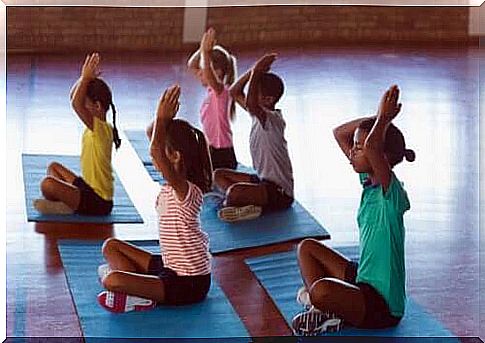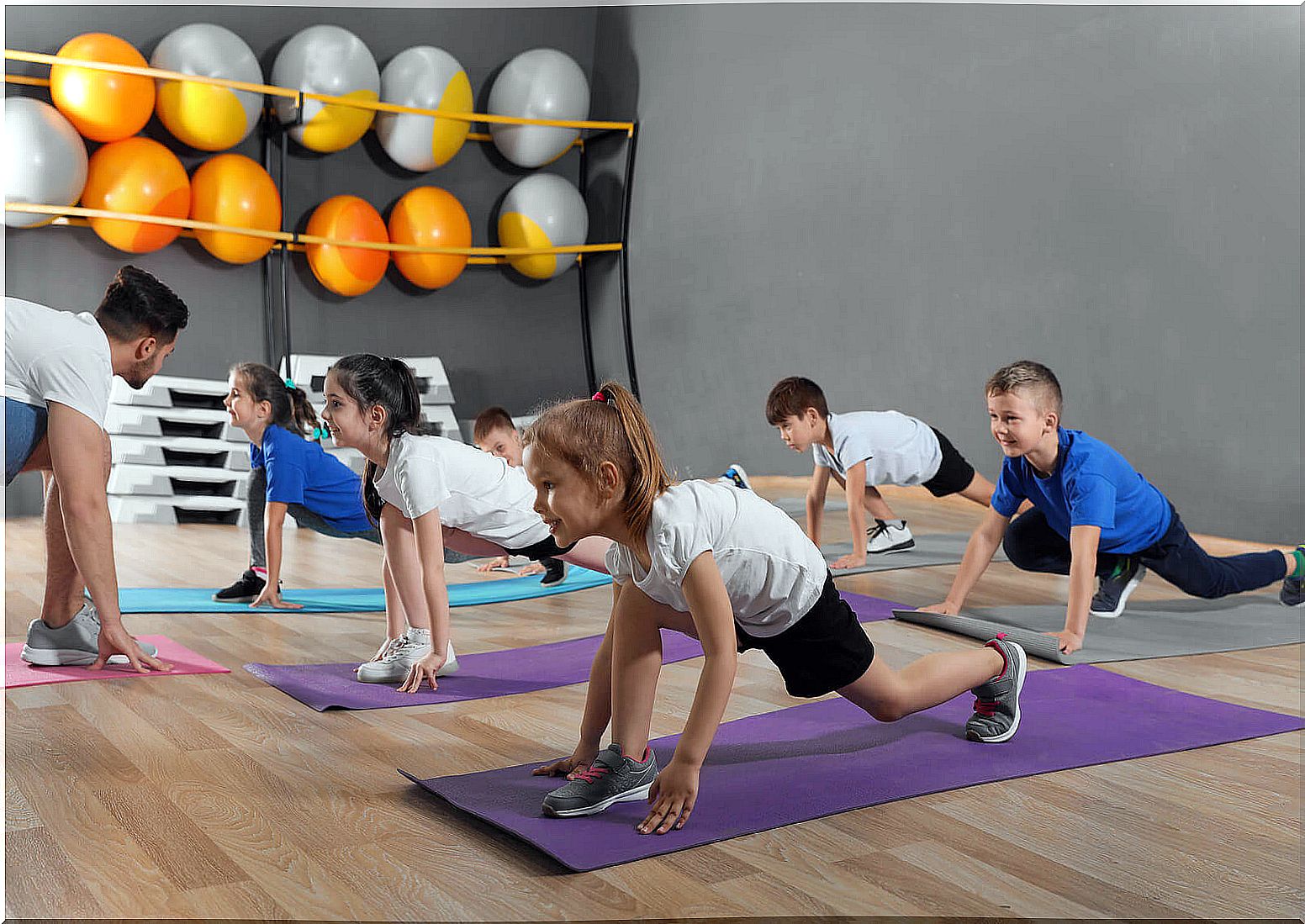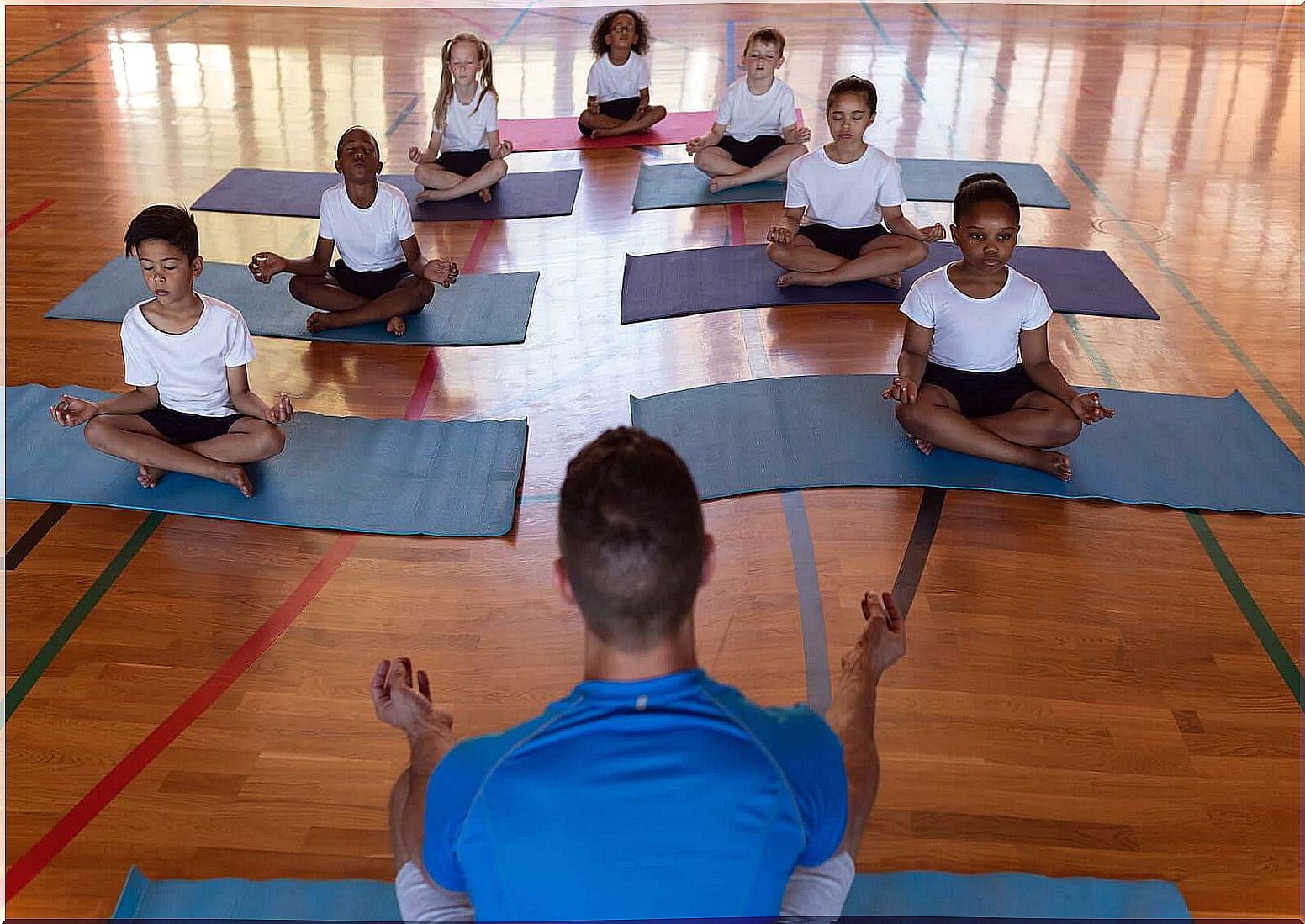Yoga In The Classroom: Tips And Benefits

The practice of yoga has many physical and mental health benefits that have been scientifically proven for both children and adults. But what are the benefits of implementing yoga practice in the classroom?
For starters, it’s important to note that different researches have found that yoga in the classroom can have many benefits for children. First, the benefit that may seem most obvious has to do with well-being.
In addition, practicing yoga at school can also help children improve their grades. On the other hand, teachers can also benefit from this practice.

Benefits of Yoga in the Classroom
Yoga in school settings has been shown to benefit both children and teenagers. For example, yoga in the classroom not only promotes processes related to self-esteem and confidence, it also helps to regulate stress and improve concentration. This has very positive implications for the learning process.
More specifically, the main benefits that the practice of yoga in the classroom brings to children are the following:
- Reduction of stress and anxiety. The desire to excel and show their value, added to the pressure exerted by the environment, makes children very stressed. Yoga helps stop self-talk and live in the moment to the full, reduce stress and anxiety, and regain calm.
- Improved memory and attention span. Yoga helps improve memory function in both adults and children. It also helps improve children’s attention span and focus.
- Improved academic performance. As they become calmer and more focused, with stress under control, children have the opportunity to devote more resources to their studies, which significantly improves their academic performance.
- A more active life. Children spend a lot of time sitting in the classroom. Therefore, the practice of yoga helps to break this sedentary cycle and develop healthy habits.
- Improved posture. One of the problems with sitting for a long time in non-ergonomic seats is that it’s easy to maintain improper posture. Yoga practice helps little ones learn healthy postures.

Some more benefits…
- Learning breathing techniques. Breathing is vital. Breathing techniques alone help children to take control. In addition, they also help to relax and oxygenate the brain.
- Promotion of mindfulness. Mindfulness is knowing how to stay in the present. This helps to focus on what is being done and to appreciate the qualities and opportunities available in each moment. In this way, stress and anxiety are reduced. Learning these techniques gives teachers the opportunity to help a child who is going through a difficult time or to calm the class down in a disruptive situation in the group.
- Improved self-control. In the classroom, many problems arise because of children’s self-control problems. Teaching yoga techniques helps teachers maintain order and helps children improve their behavior and relationships. In fact, as children progress in yoga practice, they will gain greater control over themselves.
- Improved coping skills. Children face a range of stressful situations and yoga practice teaches them to cope and manage stress correctly.
- Improved immune system. The regular practice of yoga improves immunity, which helps children to be more prepared in relation to different diseases.
- Improved sleep quality. Children need to sleep a lot and sleep well. Thus, as they achieve a quieter life through practice, they will be more relaxed at bedtime. This will help not only get them to bed earlier, but also help them sleep much better.
Teachers also benefit
Likewise, practicing yoga in the classroom also has many benefits for teachers. On the one hand, if students are calmer and more attentive, teachers can do their jobs better. This will help them to feel more fulfilled and committed to their work.
On the other hand, the teachers who do yoga with her students narrow their ties with them. This facilitates the creation of a climate of greater trust. In addition, teachers can also reap the same physical and emotional benefits as children.
Now that you know the many benefits that yoga in the classroom provides, what are you waiting to practice with your students?









